Overview
Clinicians are at the heart of healthcare, tirelessly working to diagnose and treat patients, develop individualized treatment plans, and collaborate with multidisciplinary teams to provide comprehensive care. However, the emotional challenges they face are significant, particularly as administrative burdens increasingly encroach upon their time and focus. This can lead to feelings of overwhelm and frustration, ultimately impacting the quality of patient care.
But there is hope. Advanced technology, such as AI platforms, offers a path forward. By alleviating these administrative pressures, clinicians can redirect their attention to what truly matters: their patients. Imagine a scenario where healthcare providers can spend more time engaging with patients, understanding their needs, and fostering meaningful connections. This shift not only enhances the clinician's experience but also leads to improved healthcare outcomes for everyone involved.
It's time to embrace these innovations. By integrating technology into daily practices, we can support clinicians in their vital roles and enhance the overall healthcare experience. Let's take action together to ensure that healthcare providers can focus on their passion—caring for patients. How can we further engage with these solutions to create a more compassionate healthcare environment?
Introduction
Understanding the multifaceted role of clinicians is essential in navigating the complexities of modern healthcare. These dedicated professionals—ranging from doctors to nurse practitioners—are at the forefront of patient care. They balance the emotional weight of their responsibilities with the need for effective treatment and preventive services. Yet, as they strive to provide compassionate care, they often find themselves bogged down by administrative tasks. These tasks detract from their primary mission: focusing on the health and well-being of their patients.
How can clinicians reclaim their time? What strategies can help them prioritize what truly matters? Addressing these questions is vital for nurturing a healthcare environment where patient care takes precedence. By reducing administrative burdens, clinicians can redirect their energies toward delivering the compassionate care their patients deserve.
Imagine a healthcare system where clinicians are free to connect deeply with their patients, fostering trust and understanding. This shift not only benefits the clinicians but also enhances the overall patient experience. Together, we can explore solutions that empower healthcare providers to reclaim their time and focus on their core mission. Let's engage in this conversation and work towards a more compassionate healthcare landscape.
Define the Role of a Clinician in Healthcare
Healthcare providers are the heart of our medical system, as they embody what does a clinician do by directly engaging in assisting individuals. This includes compassionate roles such as doctors, nurse practitioners, physician assistants, and allied health workers. They face the emotional challenge of diagnosing and treating individuals while understanding what does a clinician do in offering preventive services and managing ongoing health issues. How often do you feel overwhelmed by these responsibilities?
The main focus of healthcare providers is to deliver exceptional, empathetic support, which raises the question of what does a clinician do in prioritizing the needs and choices of those they serve. However, administrative burdens can weigh heavily on their ability to provide care. This is where CosmaNeura's mission comes into play, empowering healthcare professionals to leverage advanced technology to enhance their practice.
CosmaNeura's AI platform streamlines administrative tasks, allowing healthcare professionals to devote more time to meaningful interactions with individuals. This not only enhances job satisfaction but also improves the quality of services rendered. Imagine a workday where you can focus on what truly matters—caring for your patients.
Furthermore, the platform offers AI-powered billing recommendations that optimize revenue and uncover previous billing possibilities. This support helps healthcare professionals navigate the financial aspects of their practice, ensuring they can maintain a focus on patient care. By aligning with technology, healthcare providers can streamline workflows and uphold the ethical standards of care that are central to faith-based service providers.
Ultimately, this enables practitioners to prioritize what truly matters: understanding what does a clinician do in caring for those they serve. Are you ready to embrace a solution that allows you to focus on your patients and enhance your practice?
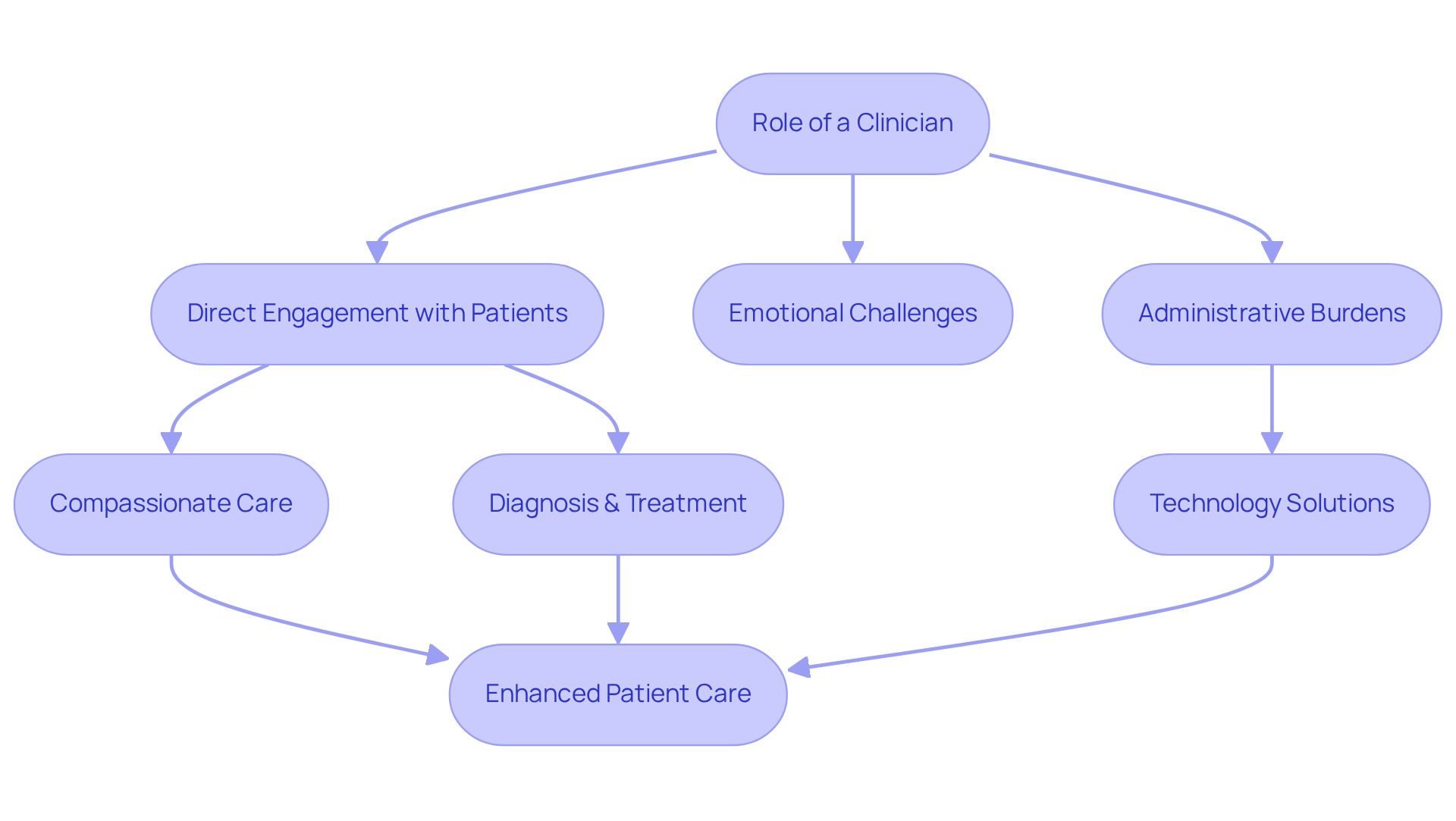
Trace the Evolution of Clinical Responsibilities
The role of healthcare professionals has undergone a profound transformation over the past century, influenced by advancements in medical knowledge, technology, and evolving healthcare delivery models. Have you ever felt overwhelmed by the demands of your profession? Historically, healthcare providers responded to individual needs as they arose, but the emergence of evidence-based medicine has shifted this approach toward proactive health management. This change emphasizes the importance of prevention and early intervention in improving patient outcomes.
The adoption of electronic health records (EHRs) has alleviated some administrative burdens, allowing healthcare providers to focus more on treatment rather than paperwork. Imagine being able to devote more time to your patients instead of getting lost in administrative tasks. Furthermore, AI-driven tools, such as those offered by CosmaNeura, are revolutionizing clinical responsibilities by automating routine processes like client intake and billing enhancement. This not only enhances administrative efficiency but also fosters greater patient involvement.
As we navigate this evolving landscape, it’s crucial to recognize what does a clinician do in light of the impact of these changes on their role. The ongoing interplay between technology and patient-centered care suggests that there will be further adaptations in how we practice medicine. By embracing these advancements, we can create a more compassionate healthcare environment. Let’s continue to support one another in this journey, ensuring that our focus remains on providing the best possible care for our patients.
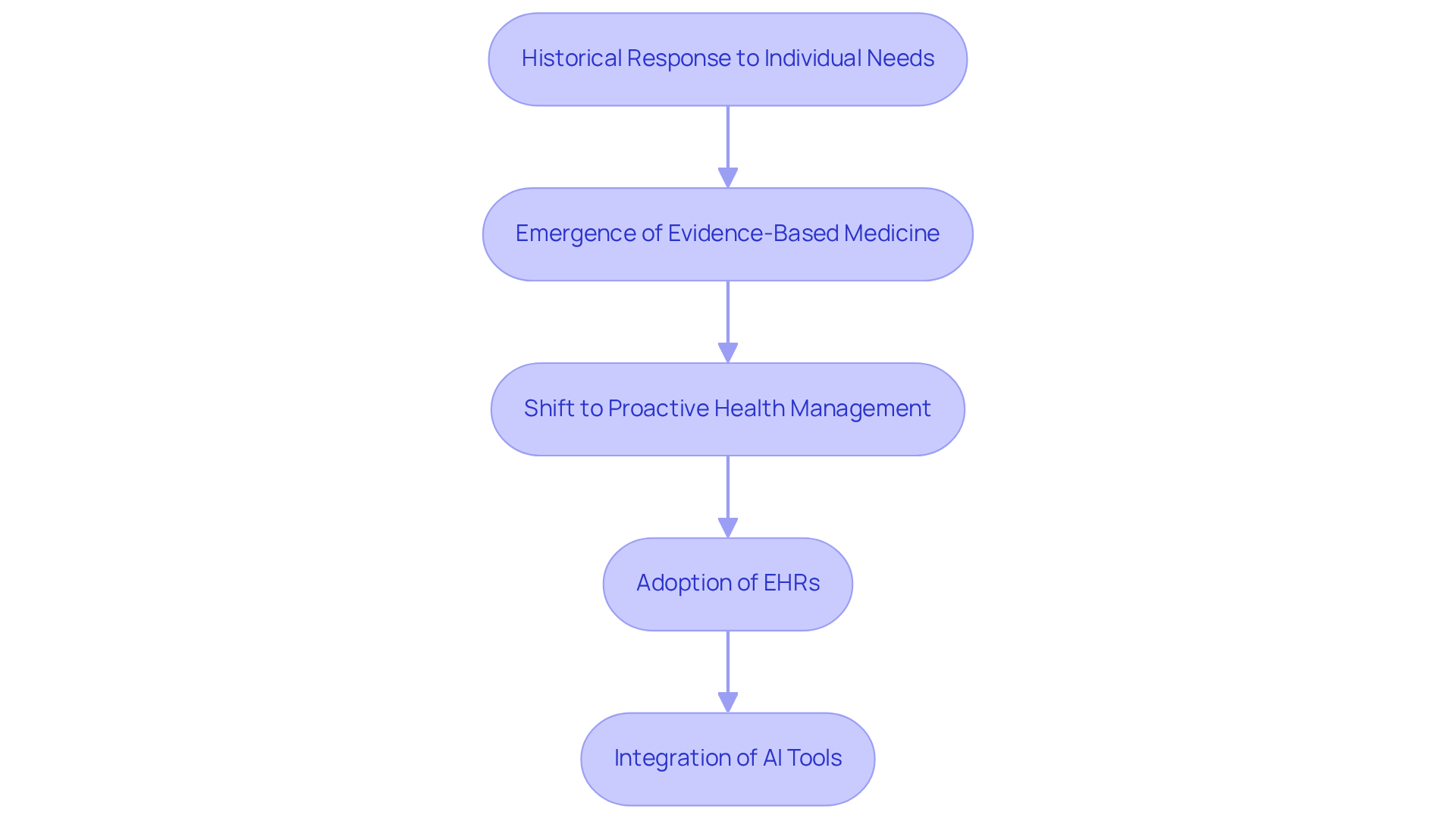
Outline Key Responsibilities of Clinicians
Understanding what does a clinician do reveals that they face a diverse range of duties that are vital to effective medical service delivery. To understand what does a clinician do, one should know that they perform comprehensive assessments, diagnose medical conditions, create customized treatment plans, prescribe medications, and deliver essential education to individuals. Yet, the emotional challenges they encounter can be overwhelming. Have you ever considered how administrative burdens might impact your ability to provide care?
Recent trends reveal that healthcare providers often spend up to 50% of their time on administrative tasks, which can detract from direct service to individuals. This situation not only affects patient care but also contributes to feelings of burnout among professionals. Fortunately, solutions are emerging. With the integration of AI tools like those offered by CosmaNeura, healthcare professionals can streamline these administrative processes, reclaiming valuable time to focus on their core responsibilities.
By automating tasks such as client intake, documentation, and appointment scheduling, generative AI enhances the quality of care and fosters a more client-centered approach. This shift prioritizes education and support, ultimately leading to improved patient outcomes. Imagine being able to dedicate more time to your patients, reducing the risk of burnout while enhancing your impact.
Moreover, CosmaNeura's commitment to Catholic teachings ensures that ethical factors are woven into the clinician's decision-making process, emphasizing the moral obligation of providers. Together, we can navigate these challenges and create a more supportive healthcare environment. Let’s embrace these tools and focus on what truly matters—caring for our patients.
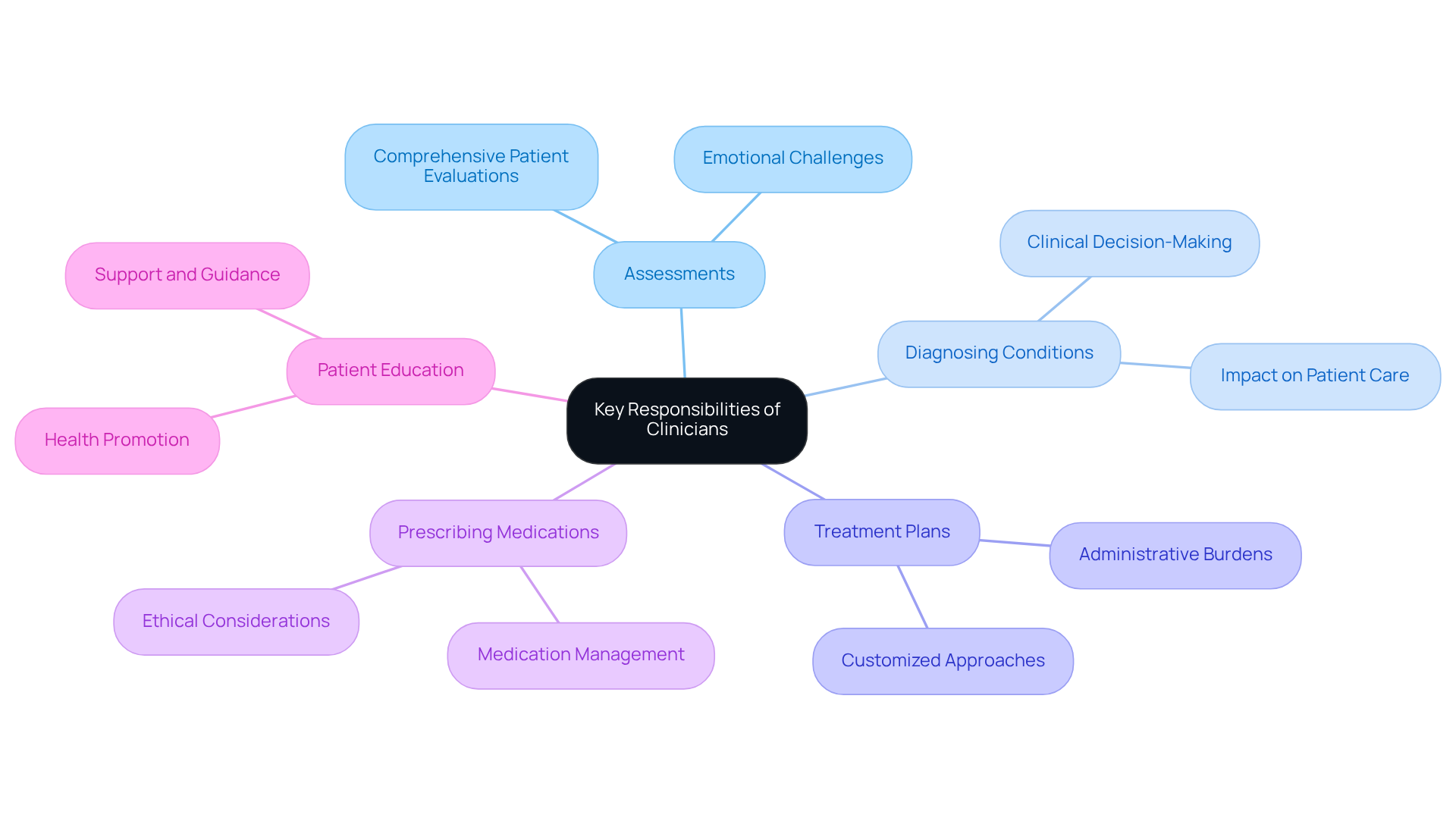
Discuss Collaboration with Multidisciplinary Teams
Collaboration with multidisciplinary teams is vital for effective healthcare delivery. To understand what does a clinician do, it's important to note that they often team up with nurses, pharmacists, social workers, and specialists to craft comprehensive plans tailored to each individual's unique needs. This collaborative approach not only addresses what does a clinician do regarding medical treatment but also encompasses emotional support and social considerations.
Have you ever wondered how teamwork can impact patient outcomes? Studies reveal that patients managed by multidisciplinary teams (MDTs) enjoy a 33% higher five-year survival rate compared to those receiving traditional treatment. This underscores the profound impact of collaboration on health outcomes. Furthermore, systematic reviews show that MDT management correlates with improved overall survival rates, boasting a hazard ratio of 0.60 for the MDT group.
CosmaNeura's AI platform enhances this collaboration by providing real-time data and insights, helping to clarify what does a clinician do in order to make informed decisions and coordinate treatment more effectively. By automating administrative tasks and facilitating communication among team members, the platform allows medical providers to focus on delivering compassionate care.
Have you considered how cohesive teamwork can elevate patient satisfaction? Research indicates that effective teamwork in medical settings leads to improved patient experiences and shorter lengths of stay. In fact, studies have shown a median reduction of 9 days in ICU stays following staff training, illustrating the tangible benefits of collaboration.
Involving multidisciplinary teams not only enhances clinical outcomes but also fosters a supportive environment for healthcare professionals, promoting job satisfaction and overall well-being. However, challenges such as low participation rates among medical professionals in MDTs must be addressed to fully realize the benefits of collaboration. As healthcare continues to evolve, the importance of collaboration within multidisciplinary teams remains a cornerstone of quality service for individuals. Let’s work together to embrace this collaborative spirit and enhance the care we provide.
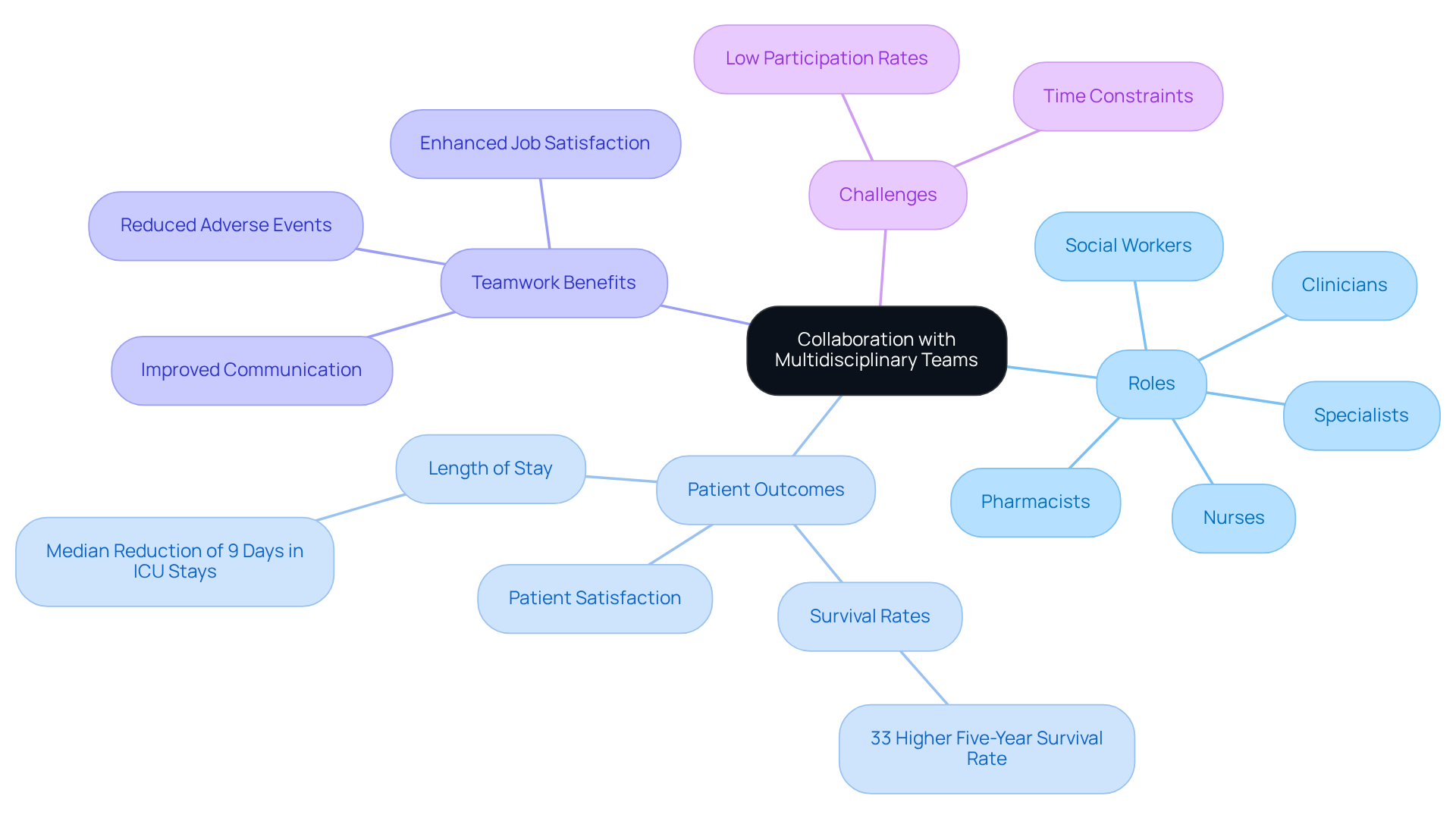
Identify Challenges Clinicians Encounter in Practice
Clinicians often encounter significant emotional challenges in their practice. The weight of administrative burdens, coupled with time constraints and the pressure to deliver quality care amidst increasing client loads, can be overwhelming. These difficulties not only lead to professional exhaustion but also impact the quality of healthcare outcomes.
Imagine a world where these burdens are lessened. The integration of AI solutions, such as those offered by CosmaNeura, can help lighten this load by automating routine tasks and optimizing workflows. By alleviating administrative responsibilities, clinicians can redirect their focus toward what does a clinician do, which is to prioritize patient care. This shift not only enhances job satisfaction but also enriches the overall healthcare experience for both providers and patients.
Wouldn't it be wonderful to reclaim that time and energy? Embracing these innovations can lead to a more fulfilling practice. Together, let’s explore how such solutions can transform the healthcare landscape, fostering a supportive environment for clinicians and their patients alike.
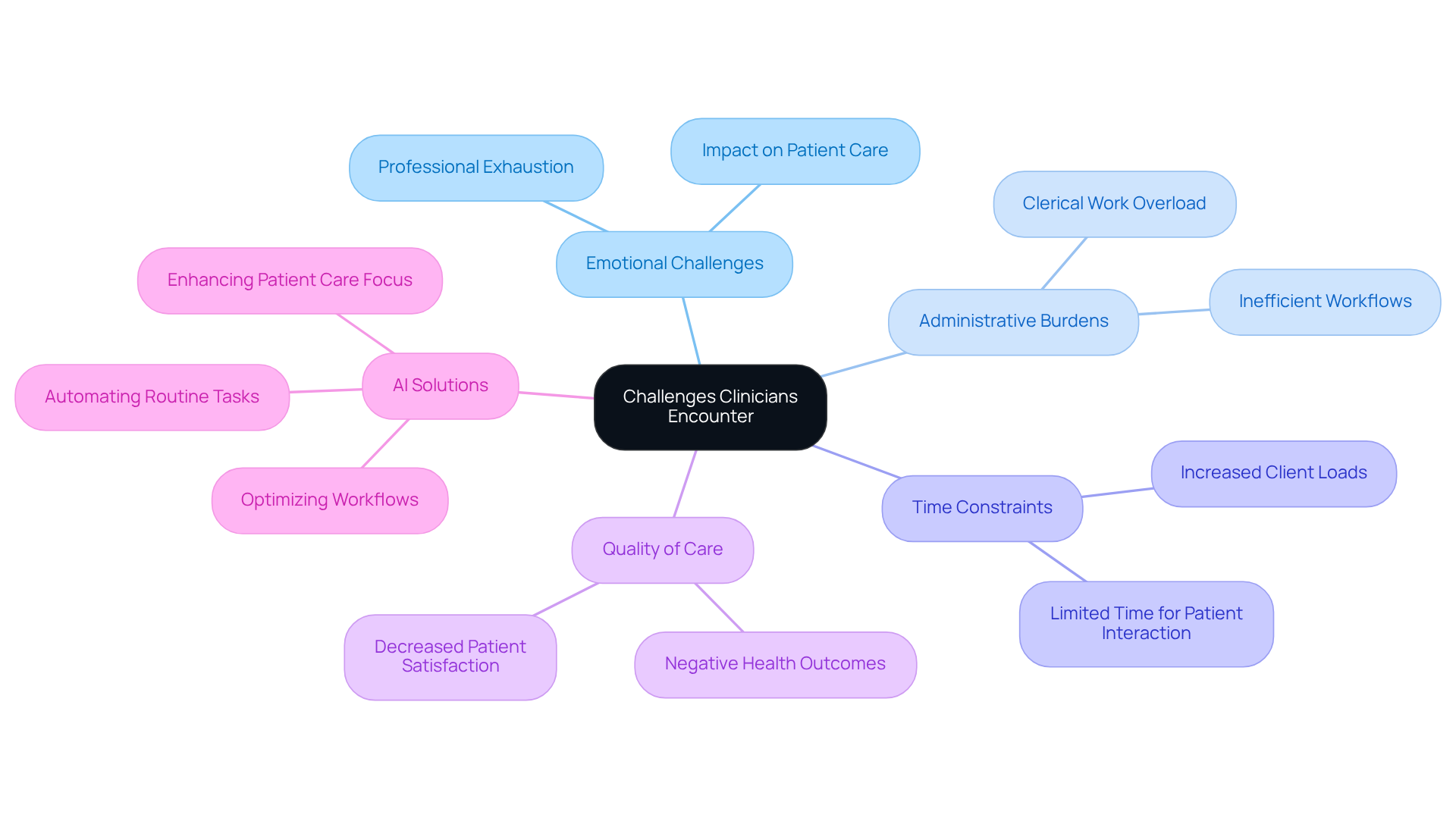
Conclusion
Understanding the multifaceted role of clinicians in healthcare reveals their essential contributions to patient care and the healthcare system as a whole. Clinicians—be they doctors, nurse practitioners, or allied health workers—embody the spirit of compassionate care, addressing both the medical and emotional needs of individuals. However, have you considered how administrative burdens can detract from this vital mission? By leveraging advanced technology, such as AI-driven solutions from CosmaNeura, clinicians can alleviate these burdens, allowing them to focus more on what truly matters—providing quality care to their patients.
The article highlights several key responsibilities that clinicians undertake, including:
- Comprehensive assessments
- Diagnosis
- Treatment planning
- Collaboration with multidisciplinary teams
These roles are crucial not only for improving patient outcomes but also for enhancing job satisfaction among healthcare professionals. Imagine a work environment where technology fosters a more supportive atmosphere, enabling clinicians to manage their responsibilities more effectively and collaboratively.
As the healthcare landscape continues to evolve, embracing innovations that streamline workflows and enhance communication among healthcare teams is paramount. By prioritizing patient care and emotional well-being, clinicians can navigate the challenges they face and create a more compassionate healthcare environment. The journey toward improved patient care and clinician satisfaction is ongoing. How can we support one another in this mission? Embracing technology and teamwork will ultimately lead to a more effective and fulfilling healthcare experience for both providers and patients alike.




